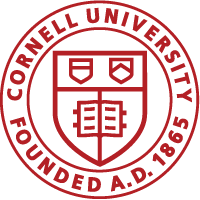Mentor: Brian Crane
Education:
B. S. Chemistry (Magna Cum Laude), Emmanuel College
Awards:
Merck Scholarship (2011- 2013)
Emmanuel College Faculty-Student Research award (Summer 2011 and 2012)
Sigma Xi Grant-in-Aid recipient (January 2012)
Research Student of the Year, (Emmanuel College, 2012 –2013)
Chemistry Student of the Year, (Emmanuel College, 2012- 2013)
Research Experiences:
Undergraduate researcher in Dr. Faina Ryvkin’s laboratory at Emmanuel College (10/2009 – 05/2013), took
part in investigating and characterizing mammalian extra-cellular enzyme lysyl oxidase. Conducted in silico
and in vitro experiments involving both molecular dynamics and protein purification techniques (organ and
recombinant sources) in an effort to probe the role of the coordinated Cu(II) ion in the catalytic mechanism
of primary amine oxidation.
Current Research Activities:
Many bacterial utilize extracellular flagella as their primary mode of motility. In the case of pathogenic bacteria, flagellar motility is critical for infectivity. Powered by the ion gradient that spans the inner membrane, the motor functions by rotating the filament in either a counter-clockwise (CCW) or clockwise (CW) direction. CCW to CW switching elicits a straight swimming to tumbling transition that allows the cell to efficiently navigate three-dimensional space in response to extracellular chemical gradients. The CCW to CW switching is controlled by a large macromolecular assembly that forms the intracellular rotor of the motor and is known as the switch complex. My research focuses on efforts to ascertain the structure and conformational transitions of the switch complex and other principal flagellar components. To this end, I am applying novel chemical labeling strategies to attach conformational probes to key flagellar proteins as well as several cutting-edge biophysical methods to characterize molecular structure. Ultimately, this research will not only generate a more detailed model of switch complex dynamics, but has potential implications for the development of motility-targeted antimicrobial agents.
Publications:
Lynch, M., Ryvkin F., “Investigation into Structural Changes of the Copper Binding Site in Lysyl Oxidase upon Substrate and Inhibitor Docking.” ISRN Inorganic Chemistry (2013): 1-6. URL
Sircar, R., Borbat, P. P., Lynch, M. J., Bhatnagar, J., Beyersdorf, M. S., Halkides, C. J., Freed, J. H., and Crane, B. R. (2015) Assembly states of FliM and FliG within the flagellar switch complex, J. Mol. Biol. 427, 867-886. PubMed
Presentations:
Poster, 112th Annual Sigma Xi International Undergraduate Research Conference (Emmanuel College, Fall 2011). “Elucidating the role of copper(II) in lysyl oxidase via chelation experiments.” Authors: Michael Lynch, Brittany Farias, Lauren Gagnon, Hung Banh, Dr. Faina Ryvkin.
Poster, Gordon Research Conference (Emmanuel College, June 2012).”Effects of copper deletion on the enzymatic activity of lysyl oxidase: molecular modeling approach and structural predictions.” Authors: Faina Ryvkin, Michael Lynch, Hung Banh.
Poster, ACERT Symposium (Cornell University, Summer 2014). “Probing the Structure of Flagellar Switch Complex from Thermotoga maritima with Pulsed Dipolar ESR Spectroscopy.” Authors: Ria Sircar, Michael Lynch, Peter Borbat, Jack Freed, and Brian R. Crane.

